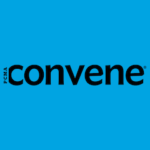Last month we provided a glimpse of the results of the Watkins Research Group’s eighth biennial survey of meeting professionals. Now, we’re presenting thoughts from the 730 veteran planner respondents about what makes them love — or not love — CVBs, and what meetings will look like in 2022.
What practical support can CVBs provide to help improve the attendance at your larger meetings and conventions?
Contact with immigration office to facilitate visa requests.
Convince the hotels to participate fully by providing the largest possible block and then not taking reservations around the block at a higher rate.
Give us customized links to CVB pages that don’t include hotel options; that way attendees can access city information, but have to look elsewhere to find hotels that the conference isn’t promoting.
Ground transportation (i.e., airport shuttle).
Help provide many specific restaurant discounts and coordinate the collection of private dining information.
I love when CVBs offer smart-phone apps. I always Facebook-friend and follow the tweets from the CVBs where we are holding our future conventions — having their social-media updates on our Facebook and Twitter pages is a fantastic marketing opportunity. The more my future attendees see that’s positive about the meeting destination, the more inclined they are to attend and, more specifically, stay longer and enjoy the city on their own.
Take lessons learned from other groups that meet in your city and share their best practices as it relates to successfully driving attendance to your city. You are the ones that see it first-hand and are best suited to educate clients on what does and does not work well for your city.
Providing information on what to do in your city when not at the meeting. Seattle did a great job for us with a list of things to do and places to see: “If you have two hours, here’s what you can do in our city; and if you have a half day, try this out.”
What is it that makes the really great CVBs/DMOs stand out?
A CVB really stands out when they are willing to be the hub of information-gathering and are willing to spend the time needed on conversations with the venues (primarily convention center and hotels) in order to provide a package that is appealing and meets the group’s needs while presenting it in the requested format.
Do your homework to know your customer. And know your products — offer a list of services before the planner has to ask, be ready with well-organized information, don’t just send them to your website to poke around. Tell them what they can find there. Contact previous cities to gather history and characteristics of the group, and review the RFP carefully. Nothing speaks more highly of a CVB (and builds confidence from the planner) than when your rep has done their homework. Create a Client Advisory Board for your bureau to stay current with planner concerns/trends.
Great communications, follow-up, and a real interest in our program — not just the dollars and cents.
And while we’re on the subject, what is it that the less-than-great bureaus never seem to quite get?
Getting the sale, then letting go of the relationship in terms of advocacy and cultivation. Not positioning themselves as a true partner for the client.
That all meetings are not the same. That each group is important to the city, no matter what the size.
Allowing individual hotels to send information directly to the planner before the city has been selected.
Even if you’re a hot place to meet, I still need a top-notch photo selection. Neighborhoods and people and diversity, not just skylines. With social media, there are so many more opportunities to use images — a good selection is key! It’s surprising how many cities have crappy photos.
I don’t actually have to work with you. Online systems are getting more sophisticated. You should make yourselves indispensable to planners. Just processing a lead does not a relationship build.
We had one bureau that could not answer questions because they were not the voice of the hotels when their city was having union issues. One CVB person would ask to meet with me and then was BlackBerry-addicted. Not the best way to impress a client as being important.
Imagine it’s the year 2022 and you’re still planning large meetings. What’s different?
Eighty percent of my members are in attendance at our annual conference, either in person or virtually. The CVB has provided the technological assistance to broadcast the entire conference by arranging for local sponsorships. Our keynote speakers give their presentation from the new orbiting space station as a 3-D holographic projection. And the major difference is that no one complains about the food!
All attendees will be able to interactively participate in all sessions via wireless devices. Many sessions will have holographic speakers, beamed in from around the world. An equal number of attendees will be virtual and on-site. All attendees will have an opportunity to present their expertise to other attendees via spontaneous, interactive hybrid sessions. All attendees will be instantaneously locatable via GPS badges.
All-electronic signage, all-electronic program books with voice activation to get attendees from meeting to meeting. All Internet access will be free, and the capability to do web meetings for those that can’t attend will be seamless. All meeting rooms will have technology in them permanently to save on sets and resets. Meeting planners’ specs will be able to be entered right into hotel interface to save time/errors and duplication of effort. In a nutshell, technology will be embedded in all aspects to allow us all to focus on the education and the attendees.
As personal time becomes more valuable, ease of access, sophisticated use of technology, high-quality hotels and restaurants will become more important. It’s the why should I travel to this meeting.
Banquet chairs automatically adjust to the right height and support for each individual and won’t be connected to each other! Lighting will make us all feel good and look even better. Healthy snacks and personalized beverages will be available on demand. Floor surfaces will respond to each person’s step to keep their feet from hurting.
I think the biggest change will be in session formats and information delivery. I don’t think that technology/web-based meetings will take the place of face-to-face meetings, but I do think that the focus of attendees when they are at the meeting will be on networking and making connections, more than pure content learning, since other sources will exist for this information. We will be tasked with providing unique learning opportunities and networking opportunities.
People will still want to have face-to-face meetings, but technology will be integral to all aspects. The smartframes on your glasses will project program information, where your friends are, local attractions, etc. Blink on an exhibitor ad and you’ll receive their marketing materials instantly. Session evaluations and speaker feedback will occur instantaneously. Because session content will be available electronically and can be viewed when convenient, attendees will spend more time networking with peers and engaged in social activities. Wi-Fi will be free in all the venues. We won’t need special AV setups in each room, because the speaker notes will be uploaded onto the attendee’s personal digital device (could be a tablet). No more delegate bags. Name badges will have GPS. If you’re not at the meeting, I’ll know. The majority of attendees will be older, so facilities will have people movers and indoor shuttles. There will be hearing-impaired broadcasts of keynote addresses. Shuttles from the hotels will be necessary, not optional. Caterers will only offer a la carte menus to accommodate increasingly fractured dietary requirements.
I wish I knew, so I could share this incredible wisdom to everyone and then retire early!
SOURCE: Based on the Watkins report of the 2012 survey of meeting planners. The copyrighted full report is made available via subscription only to bona fide CVB or DMOs for use within their own organizations for strategic planning and marketing.
Subscribers review strength and weakness profiles for their own city as well as for all of the other cities evaluated in each survey. Cities are included for evaluation in the study either by being a co-sponsor, or by a co-sponsor requesting to have a competitive cities included in the list of cities evaluated.
For information on obtaining a copy of the 2012 report or being a co-sponsor of the next survey and report, contact Curt@WatkinsResearchGroup.com. A summary of findings of the 2012 report has been provided to all planners who completed the survey.



